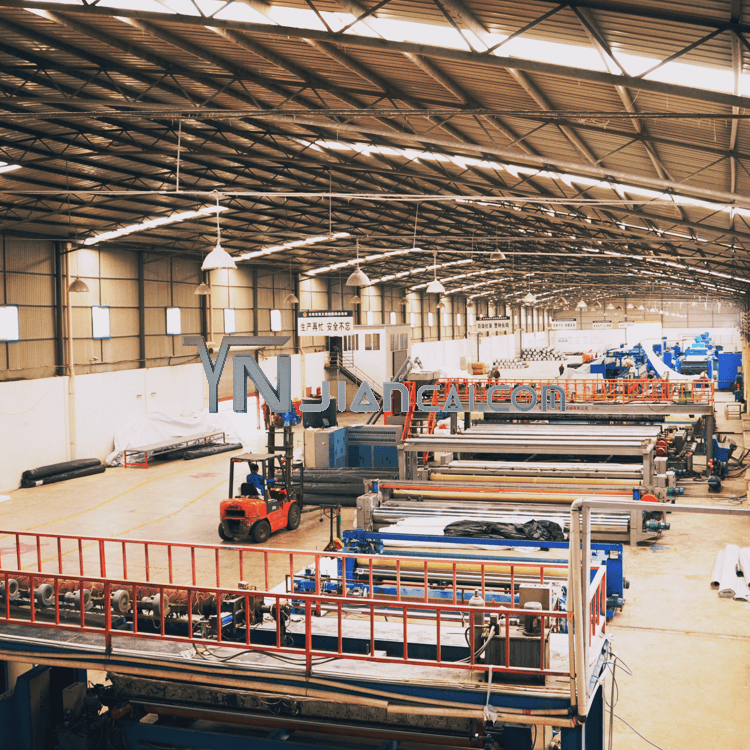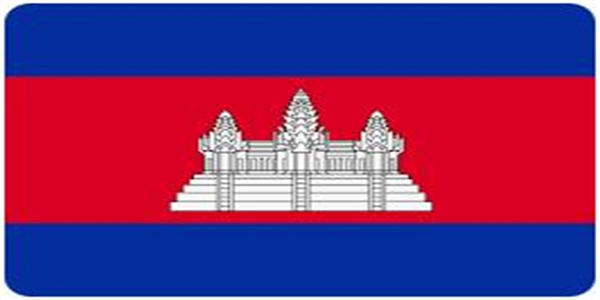แผ่นกันซึมคอมโพสิต
ข้อมูลจำเพาะ:** 50 ม. × 4 ม.
การใช้งานแผ่นกันซึมคอมโพสิต:
1. **เขื่อนดิน** **เขื่อนหินถม** **เขื่อนก่ออิฐ** และ **เขื่อนคอนกรีตกระจายแรงดัน** เพื่อการกันน้ำ
2. ฝาปิดแนวนอนกันน้ำด้านหน้าคันดินและเขื่อน และชั้นแนวตั้งกันน้ำในหลุมฐานราก
3. **เขื่อนเก็บตะกอน** **เขื่อนเก็บน้ำเสีย** และพื้นที่อ่างเก็บน้ำเพื่อการกันน้ำ
4. **เขื่อนกั้นน้ำสำหรับการก่อสร้าง** เพื่อแยกการกันน้ำชั่วคราว
5. **ร่องน้ำ** **บ่อเก็บของเหลว** (รวมถึงร่องและบ่อพักน้ำ) เพื่อการกันน้ำ
6. **แหล่งวัสดุเหลือใช้** เพื่อการกันน้ำและการกันน้ำ 7. **รถไฟใต้ดิน** **ห้องใต้ดิน** **อุโมงค์** (รวมถึงอุโมงค์) สำหรับซับกันน้ำ
8. **ทางหลวง** **ทางด่วน** **ฐานรากทางรถไฟ** สำหรับกันน้ำ
9. **การป้องกันน้ำเค็ม** ในฐานรากและโครงสร้างดินอื่นๆ
10. **ชั้นกันน้ำ** สำหรับ **ดินขยายตัว** และ **ดินเหลืองที่พังทลายได้ง่าย**
11. **การป้องกันการรั่วซึมของหลังคา**
ข้อมูลจำเพาะของแผ่นกันซึมคอมโพสิต:
- **ประเภทผลิตภัณฑ์:**
- **ผ้าสองผืนหนึ่งแผ่น**: แผ่นกันซึมพร้อมผ้ากันซึมป้องกันทั้งสองด้าน
- **ผ้าหนึ่งผืนหนึ่งแผ่น**: แผ่นกันซึมพร้อมผ้ากันซึมป้องกันด้านหนึ่ง
- **ความกว้าง:** 4ม.—6ม.
- **ข้อมูลจำเพาะ:**
- **ความหนาของเมมเบรน:** ตั้งแต่ 0.2มม. ถึง 0.8มม.
- **ความหนาของผ้าใยสังเคราะห์:** ตั้งแต่ 100ก./ม.² ถึง 800ก./ม.²
แผ่นใยสังเคราะห์แบบผสมซึ่งมีประสิทธิภาพในการกันน้ำได้ดีเยี่ยม ถูกใช้กันอย่างแพร่หลายในการกันน้ำ ควบคุมการซึม และป้องกันความชื้นในงานวิศวกรรมต่างๆ เป็นวัสดุกันน้ำที่มีประสิทธิภาพ ทนทาน และเป็นมิตรต่อสิ่งแวดล้อม

**Strength Standards for Short-Fiber Needle-Punched Nonwoven Geotextile / Polyethylene Composite Geomembrane:**
| **Unit Area Mass (g/m²)** | 400 | 500 | 600 | 700 | 800 | 900 | 1000 | **Remarks** |
|---------------------------|-----|-----|-----|-----|-----|-----|------|-------------|
| **Membrane Thickness (mm)**| 0.25–0.345 | 0.3–0.5 | | | | | | |
| **Tensile Strength (KN/m)** | 5 | 7.5 | 10.0 | 12.0 | 14.0 | 16.0 | 18.0 | **Both directions (lengthwise and crosswise)** |
| **CBR Puncture Strength (KN)** | 1.1 | 1.5 | 1.9 | 2.2 | 2.5 | 2.8 | 3.0 | |
| **Note**: If the actual specification falls between adjacent values in the table, the relevant evaluation indices are calculated by interpolation. For specifications outside the range of the table and for other processes or structures, the evaluation criteria are determined by design or by mutual agreement between the supplier and the customer.
### Basic Technical Requirements:
| **Item No.** | **Project** | **Indicator** | **Tolerance (%)** |
|--------------|-------------------------|-------------------------------------|-------------------|
| 1 | Unit Area Mass (g/m²) | As per design or contract stipulations | -10 |
| 2 | Width (cm) | As per design or contract stipulations | -1.0 |
| 3 | Tensile Strength (KN/m) | As per design or contract stipulations | -5 **(both directions)** |
| 4 | Elongation at Tear (%) | As per design requirements | 30–100 **(both directions)** |
| 5 | Tear Strength (KN) | As per design or contract stipulations | -8 **(both directions)** |
| 6 | CBR Puncture Strength (KN) | As per design or contract stipulations | -5 |
| 7 | Peel Strength (N/cm) | 6 | Not lower than the standard |
| 8 | Resistance to Hydrostatic Pressure (MPa) | As per design or contract stipulations | Not lower than the standard |
| 9 | Permeability Coefficient (cm/s) | As per design or contract stipulations | Meets design requirements |
### Notes:
1) The strength requirements for common short-fiber needle-punched nonwoven geotextile / polyethylene composite geomembranes are according to Table 2.
2) If the sample is difficult to predict for peeling and does not reach the specified peel strength due to substrate or membrane rupture, it is considered to meet the requirements.






 " />
" />